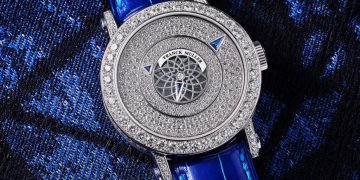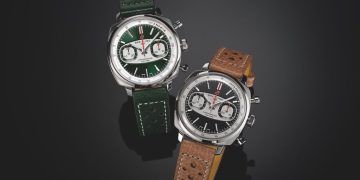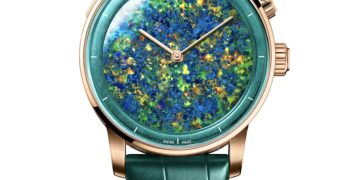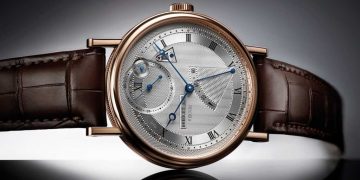Credits: Article and images by Ian Skellern @ Quill & Pad. See the original article here - https://quillandpad.com/2024/10/08/for-sale-gronefeld-one-hertz-classic-titanium-low-milage-one-careful-owner-me/
I started writing about watches over two decades ago for ThePuristS, a watch discussion forum. And because my interest was independent watchmakers, and few watch journalists living in Switzerland were then covering independents, I was fortunate to start writing for watch magazines, which paid relatively well compared to writing for today’s digital media.
But I wasn’t a fast writer, and because I loved the watches and watchmakers I was fortunate to cover, I spent far too much time visiting and talking to watchmakers to make a decent living as a watch journalist.
But as fate would have it, websites for watch brands were relatively new, and the websites that did exist were, without exception, absolute rubbish. So as somebody that used (or tried to use) brand websites from the perspective of a potential customer and a journalist, I thought that I knew better than many (if not most) what information a watch brand website should provide.
And the same went for press releases, which at that time were generally just one page of fluff imparting little more information than that the brand thought that they and their new watch were the greatest thing since the invention of the balance wheel.
The other thing that was starting to transform the world of watch marketing and communication was the arrival of social media platforms like Facebook and Twitter. And as someone who had got into the world of watches through horological forums, which were the first type of social media, these new platforms were something I was comfortable with.
As I now had a reputation (deserved or not) as a writer, knew something about how websites, press releases, and social media, should/could work, and had a good relationship with a lot of then-new independent brands, I transitioned from unsuccessfully trying to make a living as a watch journalist into developing websites, writing press releases and setting up and managing social media platforms for many nascent independent brands and watchmakers.
The work was plentiful, but there was one a major issue: few (if any) of the independent brands I was working for were selling many watches so could not afford to pay me. So because I wanted them to succeed and I loved watches, I said no problem, I’ll work in return for a watch.
And one of my clients back then was Tim and Bart Grönefeld.
The Grönefelds had cut their teeth at Renaud & Papi and had successful business in their home town of Oldenzaal in The Netherlands repairing watches and assembling kits of complicated watches for other brands. But they decided to launch their own brand.
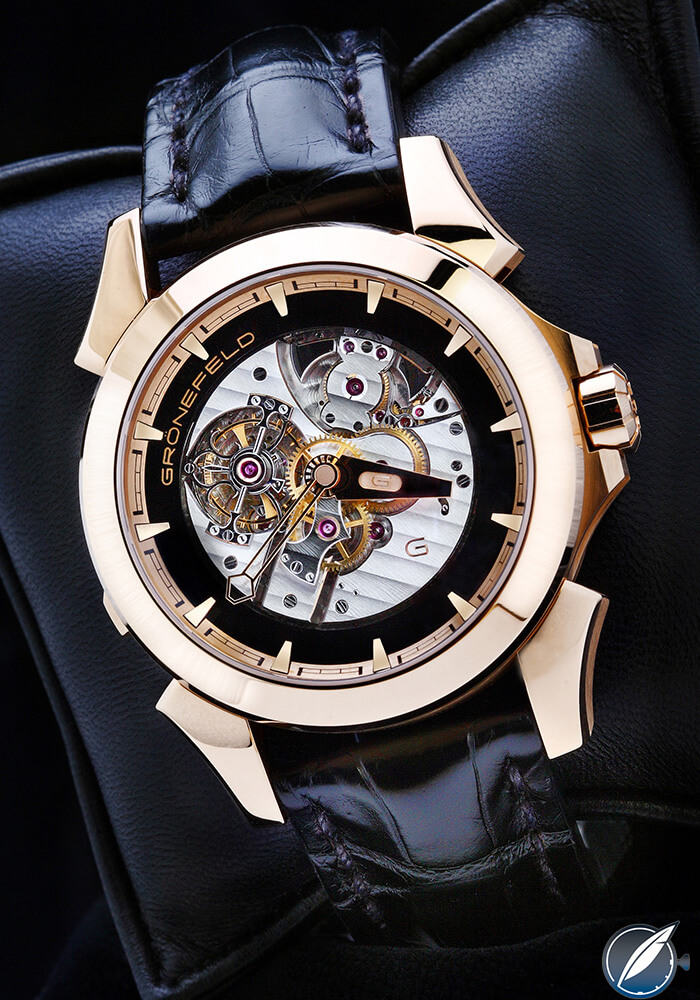
Grönefeld Tourbillon Minute Repeater GTM-06 in red gold
Tim and Bart’s first watch was a tourbillon minute repeater, the GTM-06 that launched in 2008. At 44 mm in diameter and 15 mm high it was a massive watch for its time. And with 10 pieces each costing 325,000 euros in gold and 385,000 euros in platinum, it was very expensive – especially for a new brand with no track record.
While it got some press, the GTM-06 was too big and too expensive to get the Grönefeld brothers the attention they needed from watch collectors so they started working on their next model: the One Hertz.
Grönefeld One Hertz
The One Hertz Classic launched in 2011 and it was then the world’s only serially produced watch with dead seconds. In most watches with a second hand, the hand advances 6-8 times per second depending on the frequency of the balance wheel.
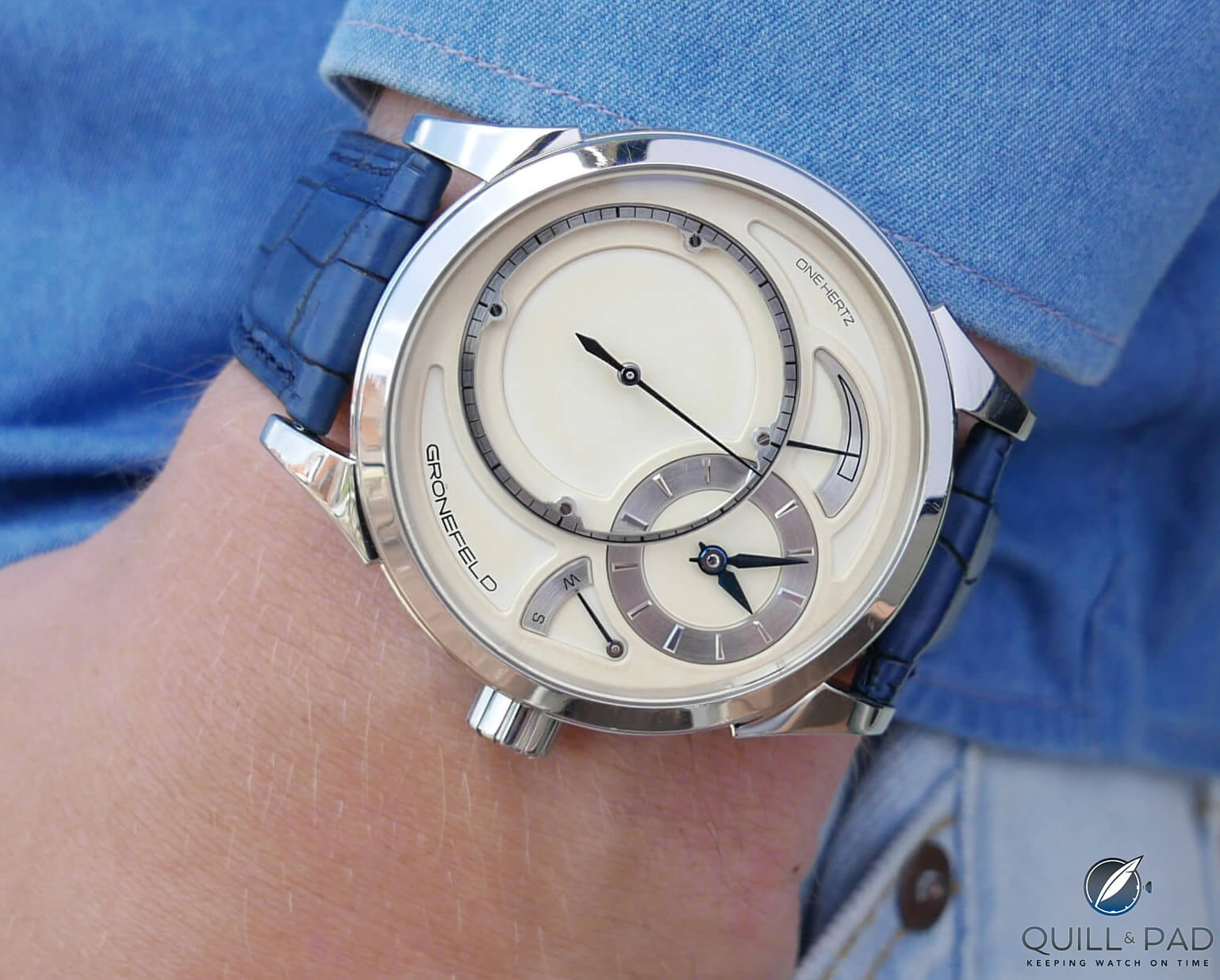
Grönefeld One Hertz on the wrist
These tiny steps are imperceptible to the naked eye, so the second hand appears to be rotating smoothly.
With mechanical dead seconds (seconds morte), the second hand advances once per second like a quartz watch.
Hours and minutes are displayed on a subdial at 2 o’clock with the large seconds dominating the dial.
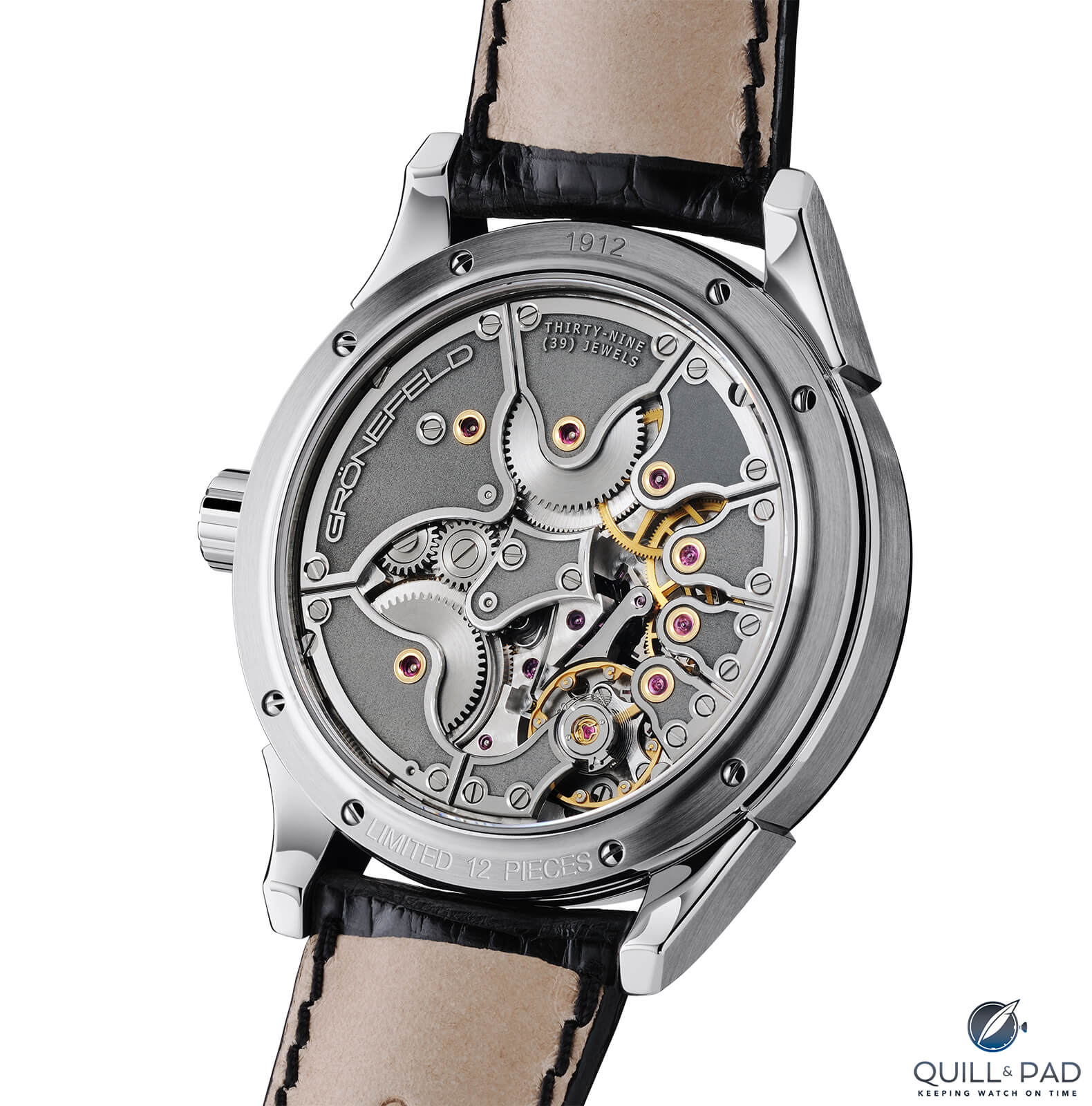
Back of the Grönefeld One Hertz
The One Hertz features two spring barrels: one to power the hours and minutes and one to power the dead seconds complication. Both barrels are wound simultaneously from the crown.
Friction with this dead seconds mechanism is minimal and the complication has no adverse influence on the escapement and free sprung balance.
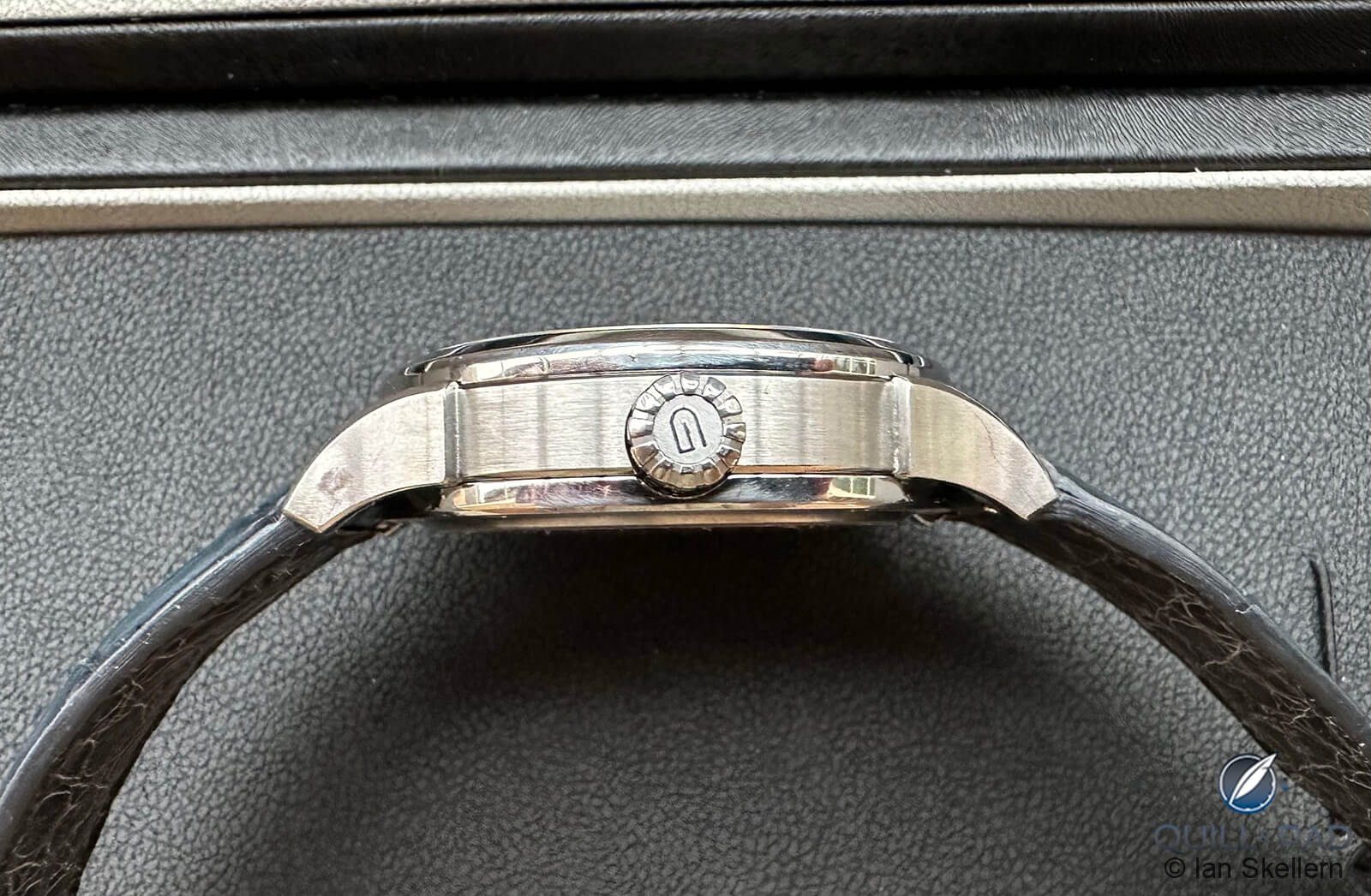
Crown and caseband of the author’s Grönefeld One Hertz
Another feature of the One Hertz was its crown functionality. You do not pull out the crown to set the time on the One Hertz: you push the crown to set the time and push to wind.
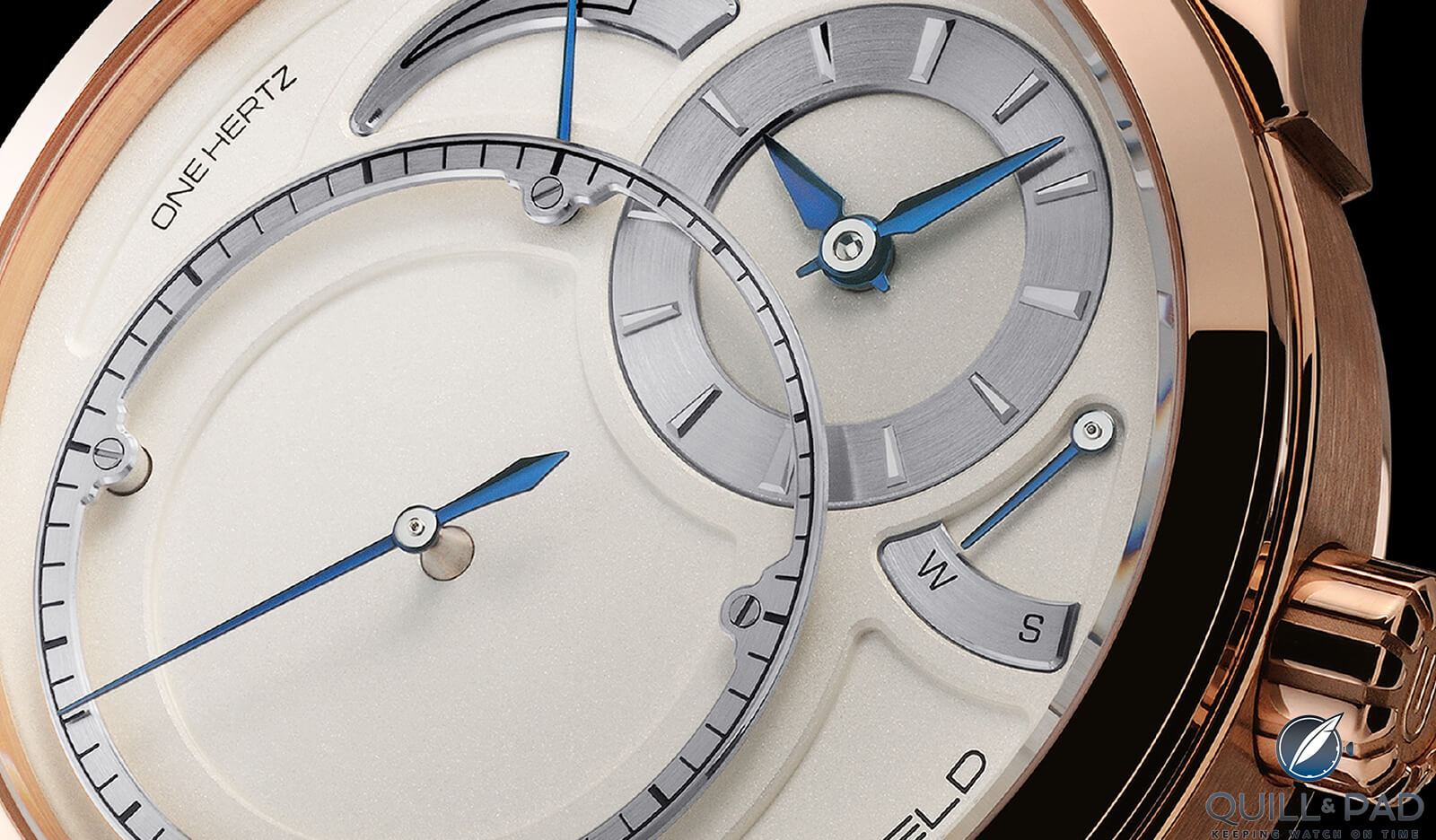
Dial of the Grönefeld One Hertz in red gold
There is a neat function indicator on the dial near the crown to let you know which function is selected.
When setting the time the seconds hack (stop) to allow for precise setting.
The One Hertz also features a 72-hour power reserve indicator at 12 o’clock.
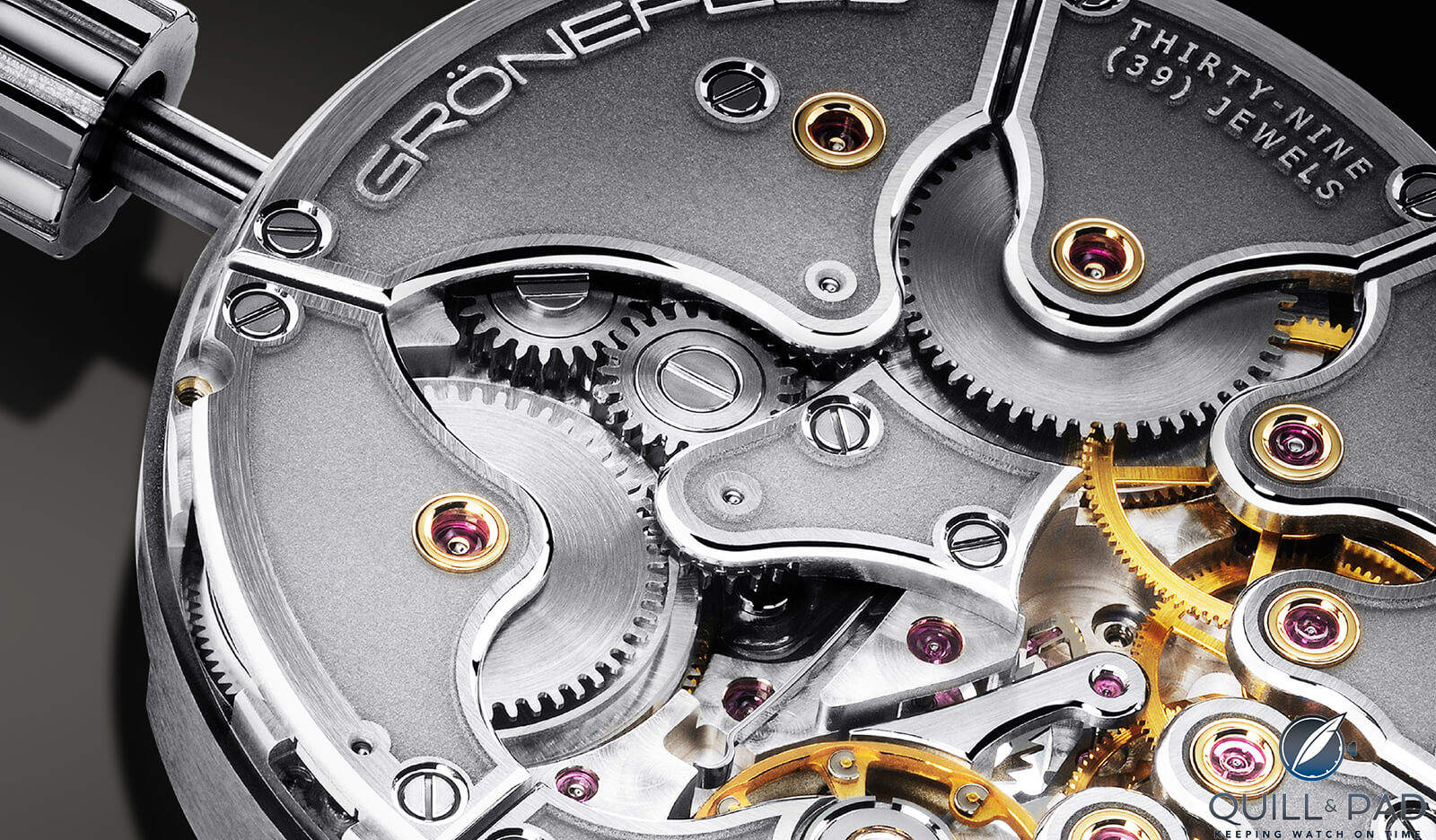
Grönefeld One Hertz G-02 movement details
And another then unique feature of the One Hertz movement is that the beautifully finished movement plates are in stainless steel (with hand polished bevels) rather than the more common brass.
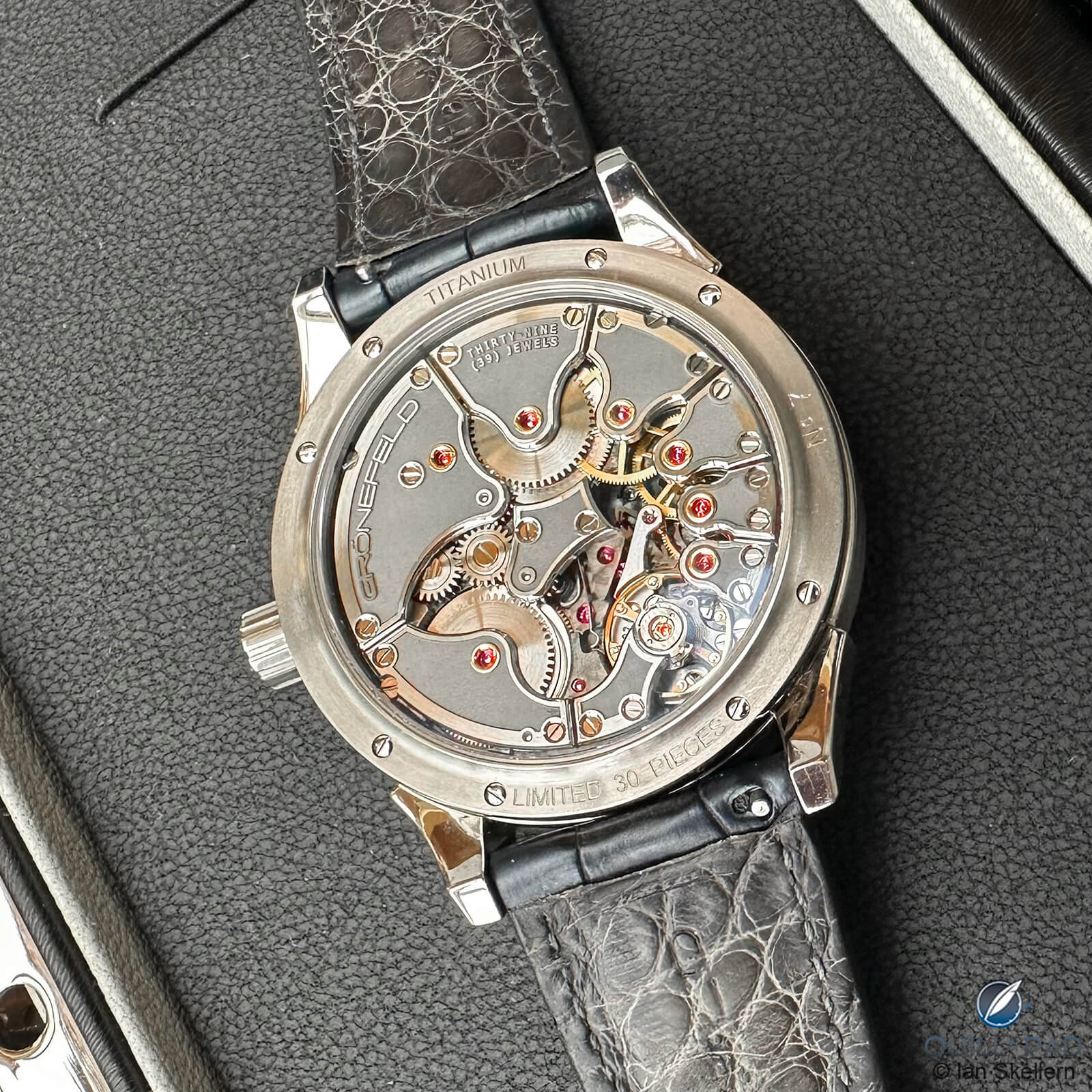
Back of the author’s Grönefeld One Hertz
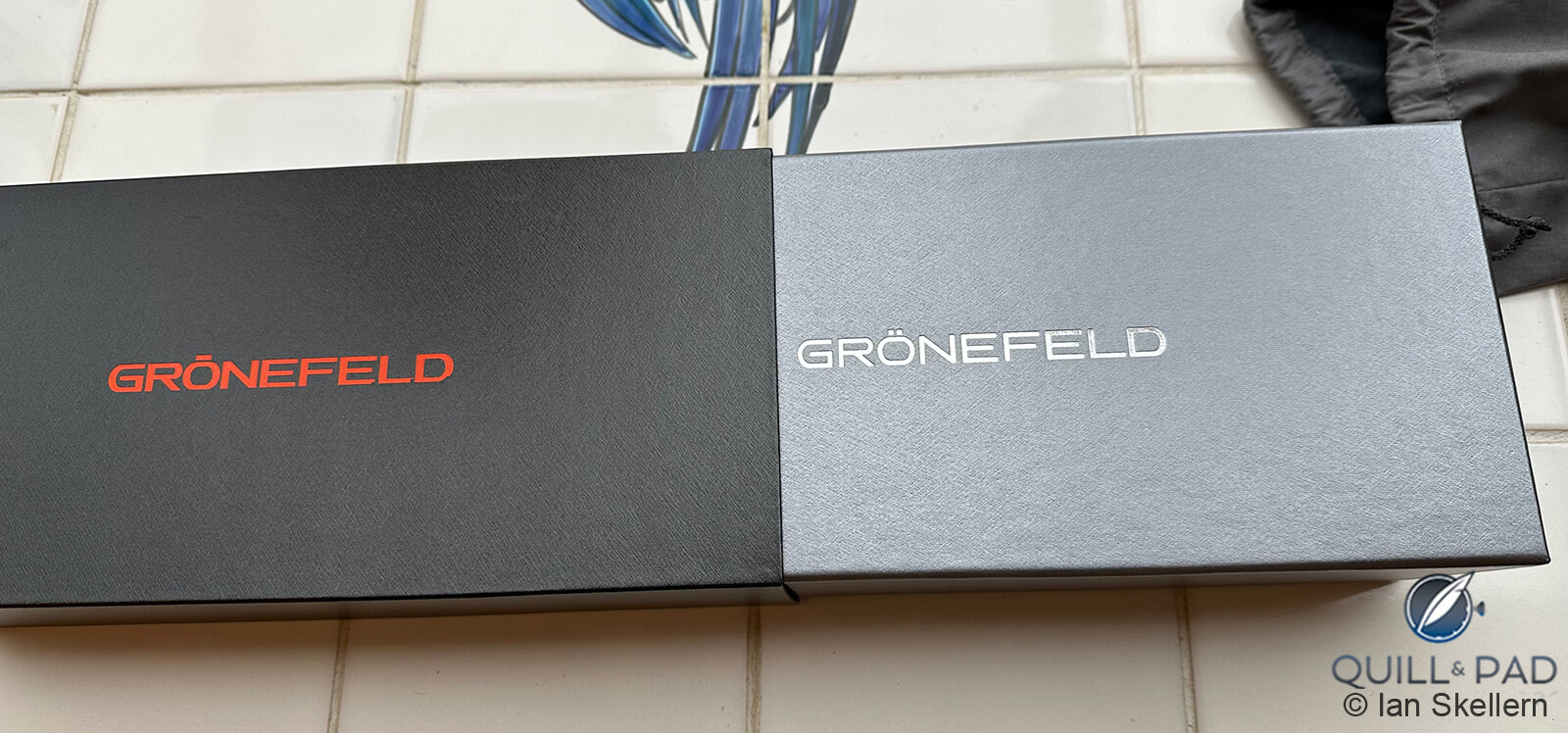
Grönefeld One Hertz packaging
The One Hertz was the model that launched the Grönefelds on their way. It was won the Innovation prize at the 2011 0024 WatchWorld Watch contest and, was voted the 2011 Watch of the Year by the Timezone watch forum.
The One Hertz, which is now long out of production, was available in steel, titanium, red gold, and platinum.
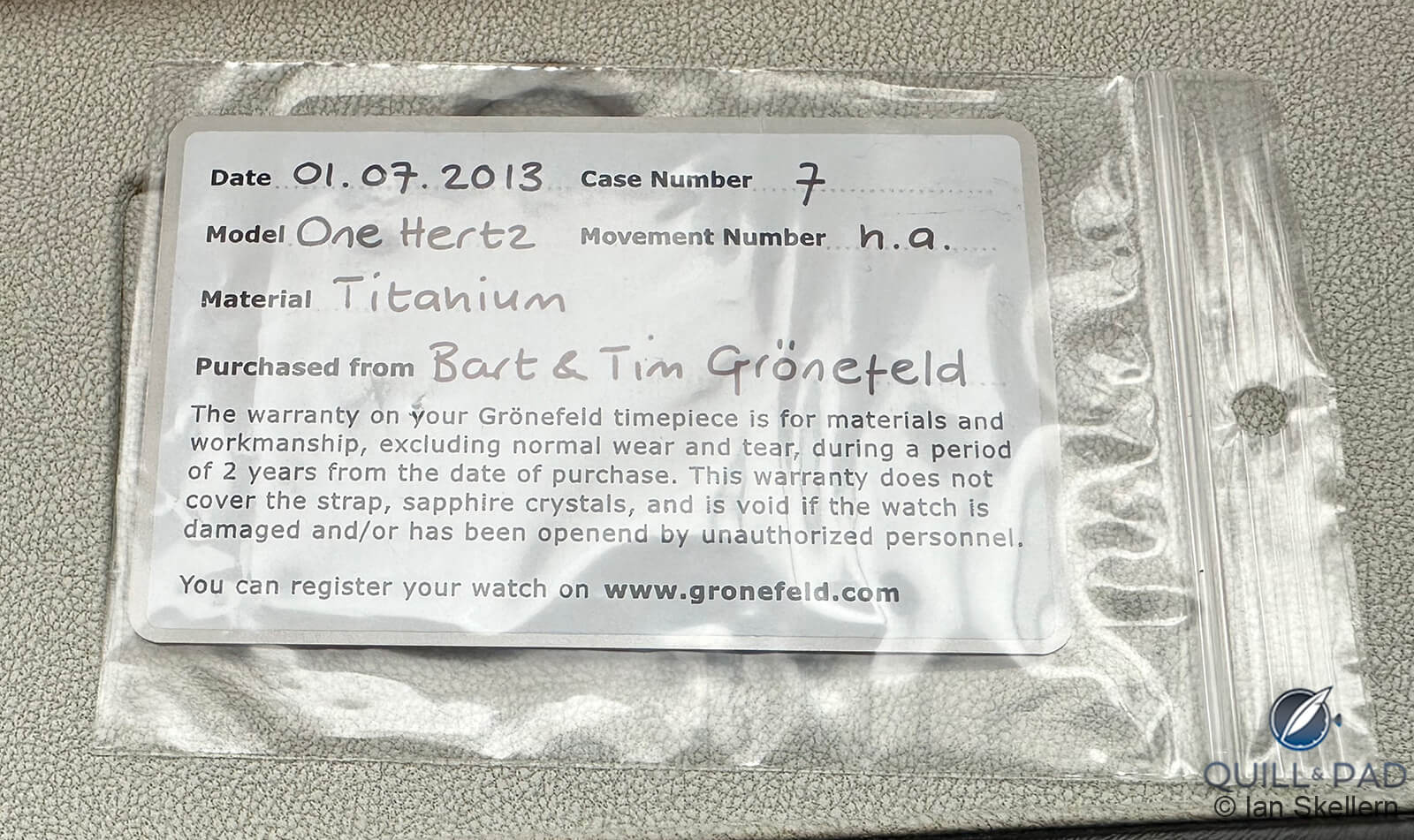
One Hertz No.7 in Titanium
I was fortunate to be presented with my One Hertz No. 7 in titanium, which was a limited edition of 30 pieces, back in 2013.
When the Grönefeld brothers worked at Renaud & Papi, Tim specialize in regulation and with my watch that showed. Before the 2013 International Chronometry Competition, a few Swiss watch journalists were invited to Le Locle to learn how the watches would be tested. After the tour, we had the opportunity to have our own watches tested for accuracy.
When my turn came, the engineer first told me that they didn’t test quartz watches (he assumed my One Hertz as quartz due to the jumping second hand), and when I told him it was mechanical, he looked again and said that he had never heard of the brand.
When he saw the results of the first test, he thought that the machine had made an error because the timing was so good, so he ran the test again, with the same results, then asked, “Who did you say made this?”
And while I love the watch, at 43 mm in diameter, I found it too big for my tiny wrist, so never wore it as regularly as it deserved.
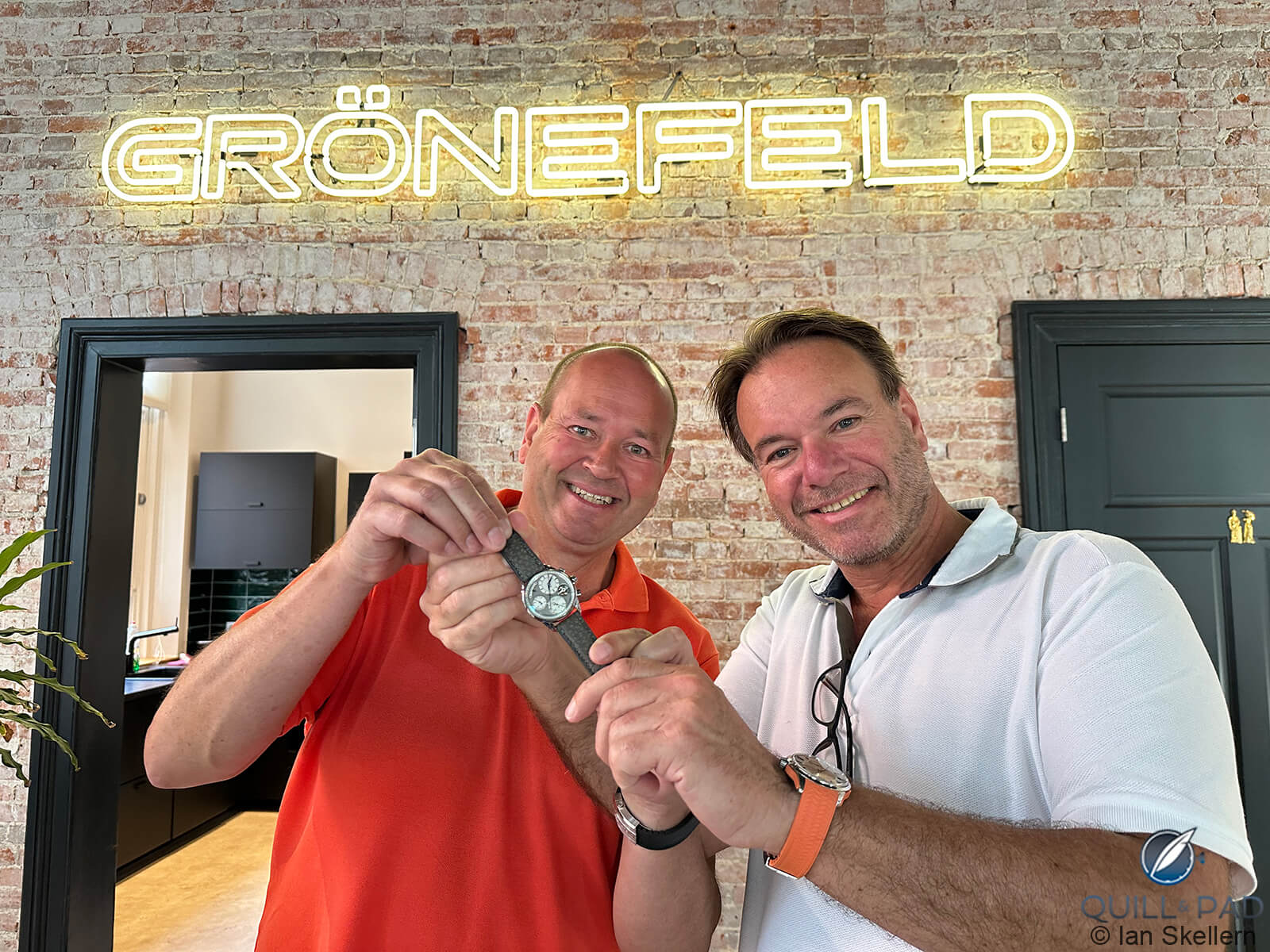
Tim and Bart Grönefeld presenting Ian Skellern with his One Hertz after servicing
As I have an expensive building project coming up, I’ve decided to sell it (with box and paperwork). My One Hertz was serviced by the Grönefelds in June 2024. When I brought it to their atelier, Tim looked at the movement with a loupe said that the oil in the movement looked as good as if it had just left their workshop.
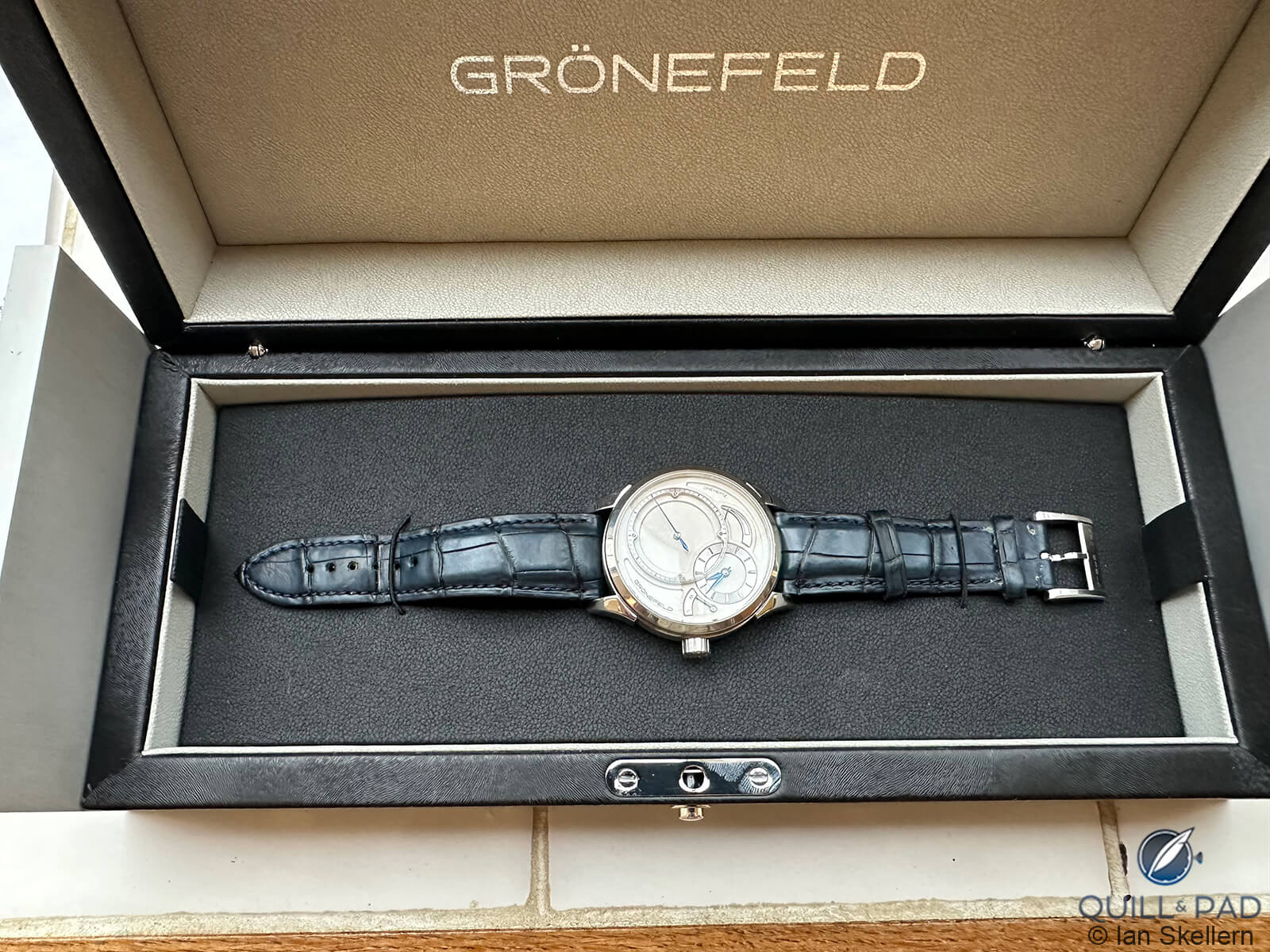
Grönefeld One Hertz in Titanium
Stephen Silver recently sold a One Hertz Fire for $80,000, there’s a One Hertz in Titanium for sale by K2 Luxury for $100.000, there is one on Chrono24 for $90,724 (no box), and there was one on eBay recently asking for $89,950 (I don’t know what it sold for).
I’m open to serious offers. Contact me at [email protected].
For more information, please visit www.gronefeld.com/collection/1896-one-hertz/red-gold-br–click-on-photo-to-read-more-/
Quick facts: Grönefeld One Hertz Classic
Functions: hours, minutes, dead seconds, power reserve indicator, crown function indicator
Movement: Caliber G-02, manual winding with dead seconds complication, two spring barrels, Phillips overcoil balance spring, 72-hour power reserve, gold chatons, 3 Hertz balance
Dimensions: 43 mm diameter x 1.5 mm high
Limitation: watch No.7 of 30 pieces
You might also enjoy:
Grönefeld One Hertz: A Collector’s Journey
Why I Bought It: Grönefeld 1941 Remontoire
Credits: Article and images by Ian Skellern @ Quill & Pad. See the original article here - https://quillandpad.com/2024/10/08/for-sale-gronefeld-one-hertz-classic-titanium-low-milage-one-careful-owner-me/



